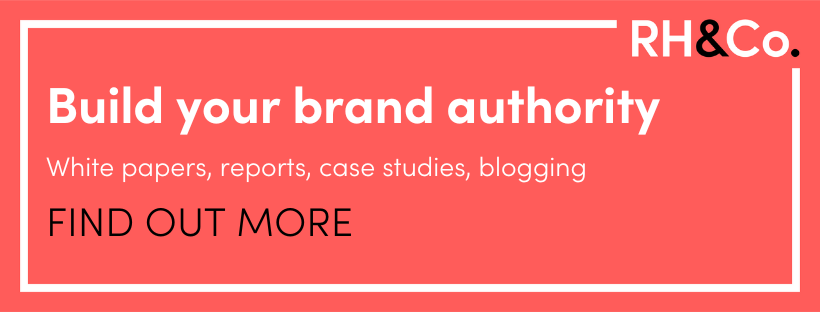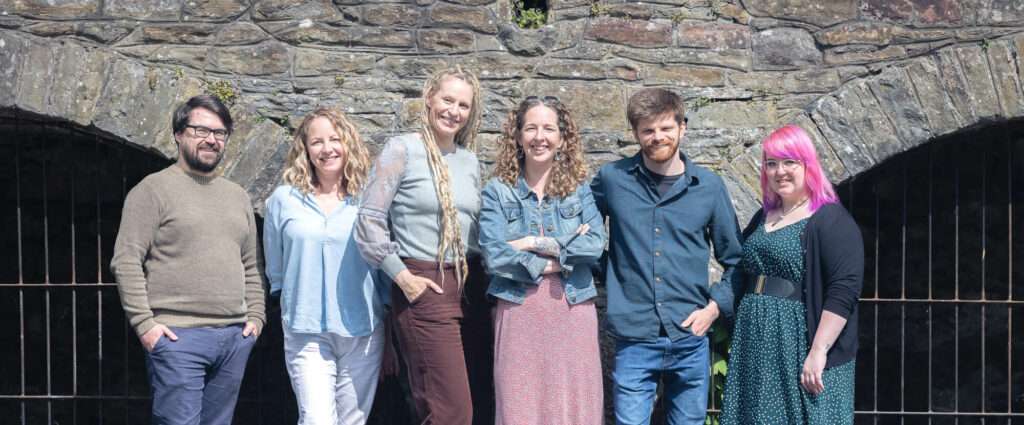

Marketing to multiple stakeholders: a guide for B2B businesses
The benefit of being a B2C marketer is that you’re normally marketing to individual people. OK, in some instances you might need to get your target buyer’s partner – or perhaps parent – to approve, but generally the final purchase decision is pretty much down to one or maybe two people.
In the B2B world, however, it’s much more complex, with all sorts of buyer personas needing to be convinced, each with a different agenda. So how do you go about building a marketing strategy that speaks to the right people at the right time?
That’s what we’re exploring in this, the second in our series on B2B marketing challenges. If you missed the first one – How to market an intangible offering – make sure you bookmark it for later. For now, let’s dig into the issue of multiple stakeholders.
TL:DR
- Know who comes in at what stage of the buyer journey
- Understand and cater for multiple needs
- Be consistent at every touch point
- Give your advocates a way to sell you in
Know who comes in at what stage of the buyer journey
The first thing you need to do – before you start creating your marketing plan – is to work out which individuals and departments come into the buyer journey at which stages. This will depend on a host of factors, from the size and complexity of the businesses you’re selling to, to how expensive, complex or business critical the product or service you’re selling is.
Whatever the case, there are some general principles that apply across most medium to large businesses…
In our research report, ‘What do CxOs read?’, we learned that C-level execs aren’t really in the market to be sold to. They’re operating at a far higher level than that – interested in the big picture and what’s coming over the horizon rather than which employee benefits platform or renewable energy supplier to choose.
Does that mean you shouldn’t market to them? Absolutely not. But see them for what they are – the agenda setters. They’re the ones that will put employee engagement or carbon neutrality on the radar. In that sense, they’re step one in the marketing long-game.
Later, layers of people below them will be tasked with digging into solution options and selecting potential suppliers or partners. Chances are that the first involved will be those whose department is most closely involved – say, the HR department, if we’re talking employee benefits.
Once you’ve got their attention, you’ll most likely need some sort of approval from other departments, possibly including Finance, IT or Procurement depending on the size of the organisation. In these final stages, the CxOs may well pop back up to give their seal of approval.

Understand and cater for multiple needs
Knowing which individuals and departments come in at which stage will help you build an appropriate funnel, and pitch the right ideas at the right time. Because each of your stakeholders will need something different from your marketing.
We’ve already talked about how CxOs are the agenda setters, the big picture thinkers, the horizon scanners. As such, they’re interested in learning about upcoming trends and being told what questions they should be asking in the boardroom.
Thought leadership, original research and trend roundups are all going to be useful here – the valuable, relational, educational content that doesn’t have even a whiff of sales about it.
Further down the line, the people tasked with solving a given problem will be looking to have that problem clarified for them, and the solutions explored. They still want impartiality at this stage, but you can move them towards more sales led content.
If you have to get through Procurement, they’ll be interested in compliance checks and making sure you tick all of their predetermined boxes. If what you’re selling falls outside of a department’s budget, you’ll be dealing with Finance, who will inevitably want numbers – what you charge, what results you’ll generate. IT, meanwhile, will want to understand how much you’ll be involved in technical implementation and how you’ll operationalise deployment.
Any comms or content at these levels need to be factual, detailed and as devoid of fluff as it is possible to get – while still maintaining your brand message and voice.
Be consistent at every touch point
Having said that you need to cater for each stakeholder’s individual priorities, it’s important that you don’t present a fractured image to your audience. Each touchpoint with your brand needs to have a degree of consistency, so that a) the HR department and the IT team don’t feel like they’re engaging with two different suppliers and b) a LinkedIn post and an outreach email still feel like they’re coming from the same brand.
To get this right, you need two things. First, you need a strong brand in the first place. You need to know your value proposition and your messaging, you need a distinct voice, and you need guidelines that ensure everyone sticks to them – from the team responsible for creating your thought leadership to the sales people sliding into people’s DMs on LinkedIn.
Second, you need a strategy that ties everything together. Your customer journeys and how people and departments fit into them. What your marketing department is creating and sharing and what your sales teams are following up with once they have a lead. All of these elements need to be tied together so that there’s a plan rather than a scattergun approach.

Give your advocates a way to sell you in
One of the biggest problems with having multiple stakeholders is that you don’t always have access to all of them directly or at least not at the same time. That means even if you gain one person’s attention, you might have to rely on them to accurately sell you in to someone else within the business before you have a chance to reach them yourself.
In a marketing setting, you can counter this with dedicated content that supports cross-stakeholder communications. Our employee benefits platform provider, to go back to that example, might put together an article on ‘5 things your CFO wants to know about our employee benefits platform’. Likewise, we’ve got a blog post about the business benefits of blogging and how to sell them to your boss.
In a face-to-face setting, you’ll need to think about the ‘leave behind’. If you’ve done a great job of pitching your product or service – or even a higher level idea, if you’re chatting to a C-level exec – you want to make sure what you’ve said doesn’t get lost in translation. This is where brochures, pitch decks, and other forms on content can be very powerful.
If you need support creating a content strategy that takes into account multiple stakeholders, get in touch today to see how we can help, or visit our content strategy service page to find out more about what we offer.
Back to hompeage









